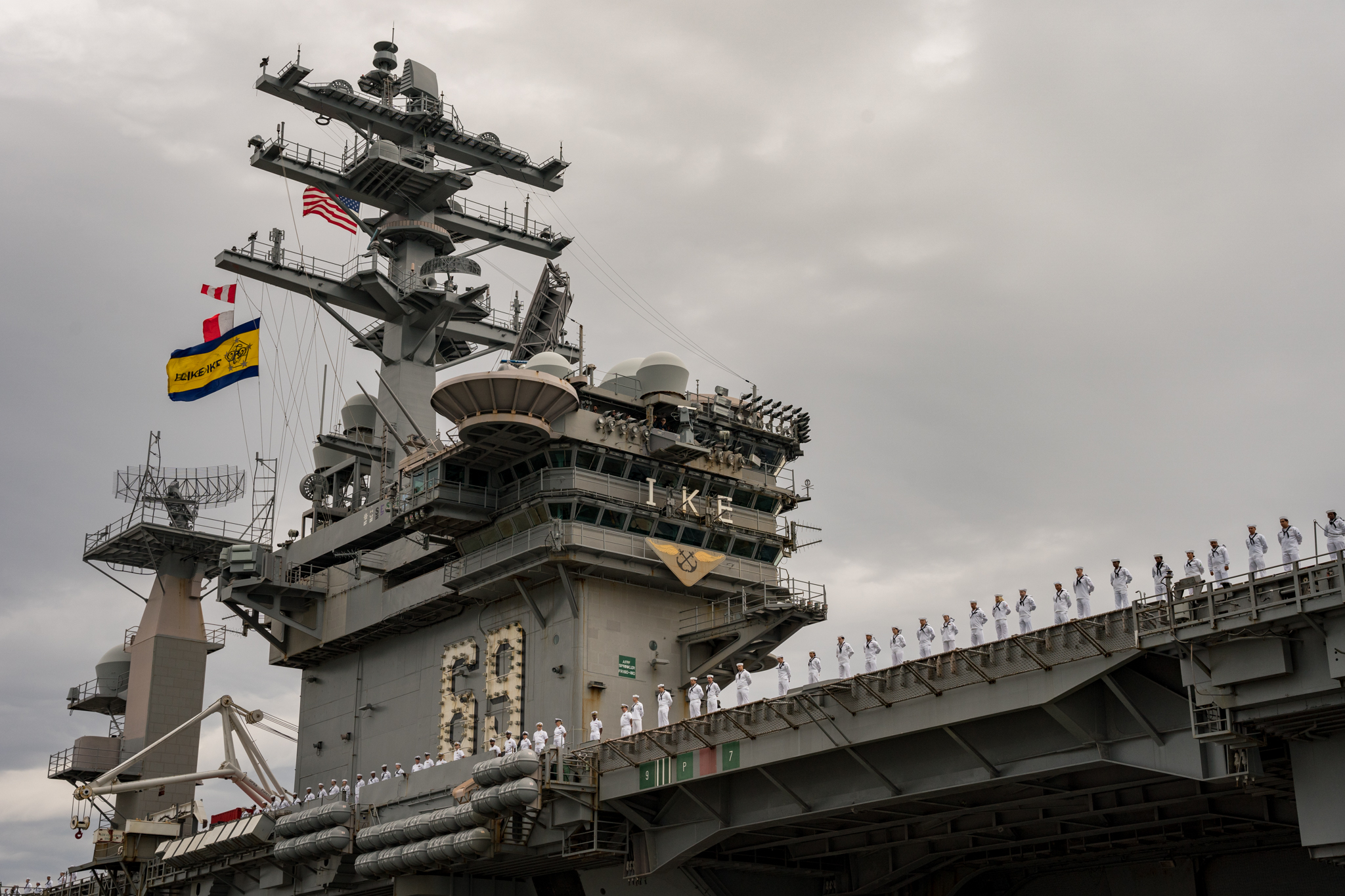
Moving two American aircraft carrier strike groups to the eastern Mediterranean sends a signal to regional actors like Hezbollah in Lebanon and Iran not “to jump on this terrible bandwagon” of fighting that began with Hamas’ attack on Israel on Oct. 7, a senior Pentagon official said Tuesday.
Mara Karlin, performing the duties of deputy undersecretary of defense for policy, said the United States has taken the step of “sending not one, but two” carrier strike groups to contain the conflict. The U.S. has also sent Air Force fighter aircraft to Central Command and alerted Army combat units to be ready for deployment to the Middle East.
The Pentagon “was really focused on sending security assistance to Israel.” She added, “by Tuesday, were already delivering what they required” in terms of air defense and munitions. Hamas launched its attacks Saturday.
The U.N. quoting de facto authorities in Gaza and Israeli government officials estimated more than 5,000 have died since Oct. 7.
Karlin added, the third prong of American efforts in the conflict is the freeing of more than 220 hostages taken by Hamas, she said during the Brookings Institution event.
She said the Pentagon was responding to the crisis in Gaza, Defense Secretary Lloyd Austin and senior U.S. defense officials were also meeting with their NATO counterparts on European security and working out the next round of aid with 50 other nations to Ukraine. The Pentagon can “walk and chew gum” in responding to vastly different situations globally.
Karlin, who was originally appearing to discuss the anniversary of the public release of the Biden administration’s National Defense Strategy, said the prioritization of China as the prime focus remains on target. “No other country has the will and increasing capability” to threaten the United States in the coming years.
The administration also released its public Missile Defense and Nuclear Posture reviews the same day.
Karlin said in the past year in addition to continuing support for Ukraine and now Israel the United States has upped its readiness and posture in the Indo-Pacific. She described the posture as “more distributed and more resilient” to deter Chinese ambitions. She noted “big agreements with Australia, Japan, the Philippines and Papua New Guinea” as examples of what has happened since the strategy’s release.
Later, Karlin added in answer to a question that the Joint Warfighting Concept and the Marine Corps’ Force Design 2030 further fit into a distributed resilient strategy.
Austin “is personally involved” in implementing the strategy and senior leaders are tasked to update the secretary on how they are adapting to changing conditions. An example she gave was China’s “really problematic operational activities” endangering routine maritime transits and flights since 2021.
Karlin said the “wrap-around approach” ensures “we’re moving through these concrete tasks” the strategy calls for.
Even without “the homework assignment from Congress’’ to deliver an updated strategy review, “it’s incumbent on us to step back and [evaluate] how we are doing.” Karlin added having the strategy in place added to “clarity of what our plan” would be in response to a crisis, like the Russian invasion of Ukraine in February 2022.
It also allowed different offices in the Pentagon to keep abreast of what others were doing to support Kyiv from weapons, munitions to missions. “That has delivered in spades” and proved useful in discussion with other nations over Ukrainian aid. “We learned how to come together” to get “a real understanding of what we were doing” to achieve the end of supporting Ukraine.
What the department learned early on was its “expectation that Russia would be much more successful” on the battlefield had proved wrong. Moscow’s forces then “did not have conventional capabilities and training.”
The war also meant the Pentagon “had to think especially hard about escalation.” Several times, the Kremlin threatened to use tactical nuclear weapons to get its way. The Congressional Strategic Review Commission raised that point in its recently released report.
On the shipbuilding and repair industrial base, Karlin said, “the Navy done some tremendous work in terms of maintenance” in recent months, cutting the time submarines are in public and private yards undergoing mid-life refueling. She said the recent White House supplemental request for more than $3.4 billion shows “we want to make sure that industrial base is as capable as possible.”
This was part of the much larger request for Ukraine and Israel.
She added the Australians are also investing in this sector of the American industrial base. The investment is part of the Australia-United Kingdom-United States [AUKUS] agreement on nuclear submarines and exchanging high-technology advances. One part of the agreement would see Canberra build and maintain its own fleet of nuclear-powered submarines. As a bridge, Australia would buy American-manufactured Virginia-class boats.
American shipyards are struggling to build two Virginia-class submarines per year. To meet Australia’s requirement, they would likely need to manufacture three. This is in addition to the yards’ delivering the Navy’s top priority, the Columbia-class ballistic missile submarine fleet.





